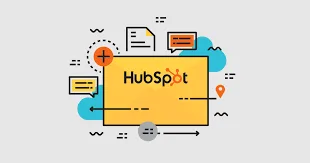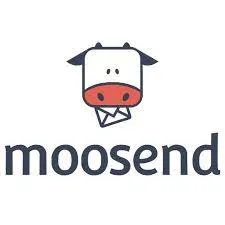Welcome to the definitive guide where we’ll dive deep into the world of email marketing, specifically comparing two giants in the field: HubSpot Email Marketing and Moosend. As we step into 2024, it’s crucial to understand which tool can elevate your email marketing strategy to new heights. Whether you’re a small business owner, a marketing professional, or simply curious about the latest in email marketing technology, this article is tailored for you. We promise to keep things light, simple, and above all, insightful. Let’s get started!
| HubSpot Email Marketing | Moosend |
|---|---|
 |  |
| G2 Score – 4.4 out of 5 stars | G2 Score – 4.6 out of 5 stars |
| TrustRadius Score – 8.5 out of 10 | TrustRadius Score – 9.8 out of 10 |
Ease of Use: Navigating the User Interface
One of the most critical aspects of any software is its usability. A tool can have all the features in the world, but if it’s not user-friendly, it’s like owning a sports car without knowing how to drive it. So, let’s compare HubSpot Email Marketing and Moosend on their ease of use.
HubSpot Email Marketing: Simplifying Complexity
HubSpot is renowned for its comprehensive solutions in inbound marketing, and its email marketing tool is no exception. When you first log in to HubSpot’s email marketing dashboard, you’re greeted with a clean, intuitive interface. It’s designed for users who may not be tech-savvy but are looking to get serious results from their email campaigns.
The standout feature here is the drag-and-drop email builder. It allows you to create professional-looking emails without needing to know a single line of code. The builder is not just about aesthetics; it’s also about functionality. You can easily add calls-to-action, images, and customize layouts to match your brand’s style.
Additionally, HubSpot provides a range of pre-designed templates, making it even easier to get started. These templates are more than just pretty designs; they’re crafted based on data-driven best practices in email marketing. This means you’re not just sending out emails; you’re sending out optimized emails geared towards engagement and conversions.
However, it’s not all roses. New users might feel overwhelmed by the sheer number of features and integrations available. HubSpot is part of a larger ecosystem, and navigating this can take some time. But once you get the hang of it, the possibilities are endless.
Moosend: Streamlining Email Campaigns
Moosend, on the other hand, positions itself as an easy-to-use, affordable alternative. It’s a tool designed for those who want to get their email campaigns up and running quickly, without much fuss. The platform’s interface is straightforward, focusing on essential features, making it ideal for small to medium-sized businesses or beginners in email marketing.
Like HubSpot, Moosend offers a drag-and-drop email editor. It’s intuitive and user-friendly, ensuring that even those new to email marketing can create eye-catching emails. Moosend’s templates are fewer compared to HubSpot, but they cover a wide range of industries and purposes.
One area where Moosend shines is its simplicity. The platform is easy to navigate, and finding features or tools doesn’t require digging through multiple menus. This simplicity, however, comes at the cost of advanced features. While Moosend covers all the basics brilliantly, it might fall short for users looking for more sophisticated functionalities.
So, who wins in the ease of use department? It depends on your needs. HubSpot is like a Swiss Army knife, packed with features that cater to a range of marketing needs beyond email. Moosend, conversely, is like a specialized tool – straightforward and efficient in what it does.
Automation Capabilities: Setting Up for Success
In the realm of email marketing, automation is the secret sauce that can transform a good campaign into a great one. It’s all about sending the right message, to the right person, at the right time, without manually managing every aspect. Let’s see how HubSpot and Moosend stack up in this crucial arena.
HubSpot Email Marketing: Advanced Automation at Your Fingertips
HubSpot’s automation capabilities are nothing short of impressive. It goes beyond basic autoresponders, offering a suite of tools that allow you to create detailed, customized workflows. This is particularly useful for businesses looking to nurture leads at different stages of the buyer’s journey.
The platform lets you set up triggers based on user behavior, such as website visits, email opens, or form submissions. These triggers can then initiate a series of actions, like sending a follow-up email, updating a contact’s lifecycle stage, or even triggering a task for your sales team.
HubSpot’s strength lies in its ability to integrate email marketing automation with other facets of its software, including CRM, sales, and customer service tools. This integration provides a holistic view of your customers, enabling more targeted and personalized email campaigns.
However, the complexity of HubSpot’s automation features might be daunting for beginners. It requires a certain level of marketing knowledge to fully exploit its capabilities. Also, the more advanced automation features are locked behind higher-tier plans, which might not be feasible for smaller businesses.
Moosend: Simplified Automation for Everyone
Moosend approaches automation with a philosophy of simplicity and accessibility. Its automation features, while not as extensive as HubSpot’s, cover most scenarios a small to medium-sized business would need.
The platform offers an intuitive way to create automation workflows with a feature called “Recipes” – pre-built automation sequences tailored for common email marketing tasks. Whether it’s welcoming new subscribers, re-engaging dormant customers, or celebrating birthdays, Moosend’s Recipes make automation easy and approachable.
Moosend also allows for custom automation workflows. You can set up triggers based on subscriber actions or data changes and choose from a range of actions like sending emails, updating subscriber data, or even triggering webhooks for more advanced integrations.
The beauty of Moosend’s automation lies in its user-friendly interface. Setting up complex sequences is surprisingly straightforward, making it a great option for those new to email marketing automation.
In the battle of automation, HubSpot stands out for businesses that require sophisticated, integrated marketing campaigns. Moosend, with its user-friendly interface and practical automation recipes, is ideal for those who want effective automation without the complexity.
Analytics and Reporting: Measuring Success
Understanding the performance of your email campaigns is vital to refine your strategy and achieve better results. Both HubSpot and Moosend offer analytics and reporting features, but how do they compare in giving you insights into your email marketing efforts?
HubSpot Email Marketing: In-Depth Analysis for Data-Driven Decisions
HubSpot’s analytics tools are designed to provide a comprehensive view of your email marketing performance. The platform offers detailed reports on key metrics such as open rates, click-through rates, bounce rates, and more. What sets HubSpot apart is the depth of its analytics.
You can segment data to analyze the performance of different campaigns, A/B test results, or how different segments of your audience are responding. HubSpot also integrates email analytics with its CRM, allowing you to see how email interactions are impacting your sales pipeline and customer relationships.
One of the most valuable features is the ability to track a customer’s journey from their first interaction with your email to their final conversion. This level of detail is invaluable for understanding which aspects of your email marketing are working and where there’s room for improvement.
However, the complexity of HubSpot’s analytics might be overwhelming for some users. The sheer amount of data available can be daunting, and it might take some time to learn how to best utilize these insights.
Moosend: Straightforward Analytics for Quick Insights
Moosend, in contrast, offers a more streamlined approach to analytics. It covers all the basics you’d expect, such as open rates, click-through rates, unsubscribes, and bounces. The platform presents this data in an easy-to-understand format, making it accessible even for beginners.
One of Moosend’s standout features in analytics is its real-time reporting. You can see how your campaigns are performing as they happen, allowing for quick adjustments if needed. Additionally, Moosend offers heatmap analytics, which is a visually intuitive way to understand which parts of your email are getting the most engagement.
While Moosend’s analytics are comprehensive enough for most small to medium-sized businesses, they may not offer the same level of depth as HubSpot. For instance, the lack of CRM integration means you won’t get as holistic a view of your customer interactions.
When it comes to analytics and reporting, HubSpot is the clear winner for businesses that need detailed, integrated insights into their email campaigns. Moosend, with its straightforward and immediate reporting, is more suited for those who need quick insights without the complexity.

Related: Check out our free SEO suite

Integration and Extensibility: Enhancing Your Email Marketing Ecosystem
In today’s digital landscape, the ability of an email marketing tool to integrate seamlessly with other software is crucial. It’s not just about sending emails; it’s about creating a cohesive and efficient workflow. Let’s compare how HubSpot and Moosend fare in terms of integration and extensibility.
HubSpot Email Marketing: The Center of a Connected Ecosystem
HubSpot truly shines when it comes to integration. Being part of a larger suite of marketing, sales, and service tools, it naturally integrates well within its ecosystem. This seamless integration means you can easily sync data across different departments, from marketing to sales to customer service.
Beyond its own ecosystem, HubSpot offers a vast array of integrations with third-party apps and services. From CRM systems like Salesforce to social media platforms, e-commerce tools like Shopify, and even custom integrations through APIs, the possibilities are vast. This makes HubSpot an ideal choice for businesses that rely on a variety of tools and want to maintain a centralized system.
HubSpot’s App Marketplace is a treasure trove of integrations, each designed to enhance and complement its email marketing capabilities. Whether you’re looking to add advanced analytics, lead generation tools, or customer feedback mechanisms, there’s likely an integration available.
The downside is that navigating and implementing these integrations can be complex, and in some cases, might require technical expertise. Additionally, while many integrations are free, some require a subscription to the third-party service, which could add to the overall cost.
Moosend: Streamlined Integration for Simplicity
Moosend may not have the extensive integration capabilities of HubSpot, but it covers the essentials effectively. It integrates with popular e-commerce platforms, CRM systems, and lead capture tools. This allows businesses to automate aspects of their marketing and sales processes in conjunction with their email campaigns.
The platform also offers a straightforward API for custom integrations, allowing businesses with development resources to tailor Moosend to their specific needs. However, the range of available integrations is more limited compared to HubSpot, focusing mainly on the most widely-used services.
One of the advantages of Moosend’s approach to integration is its simplicity. The process of linking other tools to your Moosend account is generally straightforward, making it accessible even to those with limited technical expertise.
In the arena of integration and extensibility, HubSpot is the more robust option, ideal for businesses that require a wide range of integrations and have the resources to manage them. Moosend, with its more focused and straightforward integration options, is better suited for smaller businesses or those with simpler processes.
Customer Support and Resources: Ensuring a Smooth Email Marketing Journey
Effective customer support and a wealth of learning resources can significantly enhance your experience with an email marketing tool. Let’s delve into how HubSpot and Moosend support their users in their email marketing journey.
HubSpot Email Marketing: Comprehensive Support for Diverse Needs
HubSpot is renowned for its customer support and extensive educational resources. Their support team is accessible via email, phone, and live chat, providing timely and helpful assistance. But the real standout is HubSpot Academy, an online learning hub offering in-depth courses, certifications, and training materials, not just about their tools but about inbound marketing as a whole.
The abundance of resources available through HubSpot Academy can be particularly beneficial for businesses looking to deepen their marketing expertise. It’s not just about troubleshooting; it’s about empowering users to maximize the potential of their marketing strategies.
Additionally, HubSpot’s community forum is a vibrant platform for users to share experiences, ask questions, and get advice from both peers and HubSpot experts. This community support complements the formal customer service channels, offering a more collaborative form of support.
However, one should note that some advanced support services might be available only with higher-tier plans, which could be a consideration for smaller businesses or those on a tight budget.
Moosend: Focused Support for Quick Resolution
Moosend, while smaller in scale compared to HubSpot, offers effective and responsive customer support. Users have access to support via email, live chat, and phone. Their support team is known for being knowledgeable and quick to resolve issues, which is crucial for businesses that rely on timely email campaigns.
In terms of educational resources, Moosend provides a solid collection of guides, tutorials, and webinars. These resources are more focused on using Moosend’s platform effectively, rather than the broader scope of marketing education offered by HubSpot. For many users, especially those new to email marketing, this focused approach can be more accessible and immediately useful.
The Moosend blog is another valuable resource, offering insights, tips, and best practices in email marketing. It’s a handy tool for staying updated on industry trends and enhancing your email marketing knowledge.
In customer support and resources, HubSpot stands out for its comprehensive approach, catering to users who seek deep, holistic marketing education alongside product support. Moosend, with its focused and efficient support, is well-suited for users who prefer a straightforward, no-frills approach to getting assistance.
Pricing and Value for Money: Balancing Cost and Features
When choosing an email marketing tool, pricing is a crucial factor. It’s not just about the cost but also the value you get for your investment. Let’s compare HubSpot and Moosend in terms of their pricing structures and the value they offer.
| HubSpot Email Marketing | HubSpot’s email marketing tool is part of the HubSpot Marketing Hub, which offers the following plans: Free Tools: Basic email marketing features with HubSpot branding. Starter Plan: Starting at $45/month, includes email marketing, ad management, landing pages, forms, and more. Professional Plan: Starting at $800/month, offers advanced marketing automation, smart content, and A/B testing. Enterprise Plan: Starting at $3,200/month, adds features like adaptive testing, advanced reporting, and custom event triggers. |
| Moosend | Free Plan: Offers access to basic features for up to 1,000 subscribers, including email campaigns, automation, and landing pages. Pro Plan: Pricing starts at $8 per month for up to 2,000 subscribers, with unlimited emails. Includes advanced features like transactional emails, landing page builder, and phone support. The price scales with the number of subscribers. Enterprise Plan: Custom pricing for businesses needing custom features like account management, SSO (Single Sign-On), and more. |
HubSpot Email Marketing: Premium Pricing for a Comprehensive Suite
HubSpot is known for its premium pricing, but it’s important to understand what you’re getting for your money. The platform offers a range of pricing tiers, catering to different business sizes and needs. Even the basic plans come packed with features, including their CRM, which is free.
The more advanced plans unlock additional features such as enhanced automation, detailed analytics, and a higher level of customer support. HubSpot’s pricing is structured in a way that as your business grows, you can scale up your plan to match your evolving needs.
For businesses looking for an all-in-one solution that covers not just email marketing but a whole range of marketing, sales, and service activities, HubSpot offers great value. The integration and data sharing across different tools can significantly improve efficiency and insights.
However, for smaller businesses or those focused solely on email marketing, HubSpot might feel like an expensive option, especially when advanced features are considered.
Moosend: Affordable Pricing with Essential Features
Moosend is often praised for its affordable pricing model, making it a popular choice for small to medium-sized businesses. The platform offers a free plan, which is quite generous in terms of features, and is perfect for businesses just starting with email marketing.
Their paid plans are based on the number of subscribers, with no limit on the number of emails you can send. This makes Moosend a cost-effective solution for businesses with a growing email list but who still want to keep costs under control.
While Moosend’s feature set might not be as extensive as HubSpot’s, it covers all the essential aspects of email marketing. The platform offers good value for businesses that need a straightforward, effective email marketing tool without the bells and whistles of a more comprehensive marketing suite.
In terms of pricing and value for money, your choice between HubSpot and Moosend will largely depend on the size of your business and the scope of your marketing needs. HubSpot is a significant investment but offers a comprehensive suite of tools for larger businesses or those with complex marketing strategies. Moosend, with its affordable pricing and solid feature set, is ideal for smaller businesses or those focused primarily on email marketing.
Conclusion
In conclusion, both HubSpot Email Marketing and Moosend offer compelling features for email marketing, but they cater to different needs and budgets. HubSpot stands out with its comprehensive suite of tools, advanced automation, and in-depth analytics, making it ideal for larger businesses or those with complex marketing needs. Its higher price point reflects the extensive functionality and integration capabilities it offers.
Moosend, on the other hand, is a great choice for small to medium-sized businesses seeking an affordable yet effective email marketing solution. Its ease of use, straightforward automation, and focused analytics are perfect for those who want to execute impactful email campaigns without the complexities of a larger marketing suite. Ultimately, the decision between HubSpot and Moosend should be based on your specific business requirements, budget constraints, and long-term marketing goals. Both tools have their strengths, and choosing the right one will ensure your email marketing efforts are both successful and efficient.
Read Next
- ConvertKit vs Pure360: The Best Email Marketing Tool for 2024
- ConvertKit vs MailUp: The Best Email Marketing Tool for 2024
- ConvertKit vs eSputnik: The Best Email Marketing Tool for 2024
- ConvertKit vs Maropost: The Best Email Marketing Tool for 2024
- ConvertKit vs BenchmarkONE: The Best Email Marketing Tool for 2024






















Comments are closed.